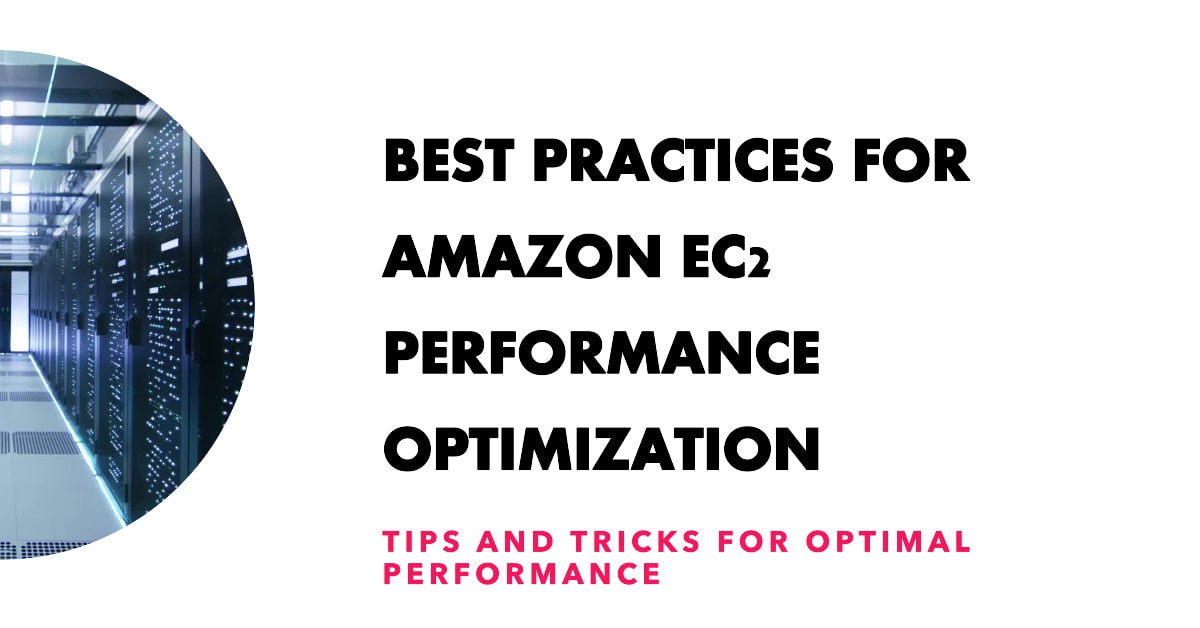Amazon Elastic Compute Cloud (EC2) is a powerful and flexible cloud computing service offered by Amazon Web Services (AWS). It provides scalable compute capacity in the cloud, making it an excellent choice for businesses of all sizes. However, to get the most out of your EC2 instances, you need to optimize their performance. In this guide, we’ll explore how to do just that without drowning you in corporate jargon. Instead, we’ll keep things spartan and straightforward.
1. Rightsize Your EC2 Instances
The first step in optimizing your EC2 performance optimization is to choose the right instance type. AWS offers a wide range of instance types, each with different combinations of CPU, memory, and other resources. Instead of opting for the fanciest or most expensive instance, take the time to understand your workload’s requirements. If you’re running a small website, a t2.micro instance might be sufficient, while a memory-optimized instance could be more suitable for a database server.
2. Utilize Auto Scaling
Auto Scaling is a nifty feature that allows you to automatically adjust the number of EC2 instances in a group based on demand. This ensures that you have enough capacity to handle your workload without over-provisioning. It’s a cost-effective way to optimize performance by adding or removing instances as needed. No corporate jargon here, just smart scaling to meet your traffic spikes.
3. Monitor and Adjust
Performance optimization is an ongoing process. You should regularly monitor your EC2 instances to ensure they’re running efficiently. AWS provides tools like Amazon CloudWatch that allow you to set up alarms and track key performance metrics. When you notice performance bottlenecks or resource constraints, make the necessary adjustments. It could be as simple as increasing the instance size or making changes to your application.
4. Storage Matters
Storage is often a critical component of EC2 performance. Choosing the right storage type and size is crucial. Amazon Elastic Block Store (EBS) is a commonly used storage option, and it offers a range of volume types optimized for different use cases. For example, if you require high I/O performance, provisioned IOPS SSDs might be the way to go.
5. Optimize for Network Performance
If your application relies heavily on network performance, you’ll want to choose an EC2 instance type with enhanced networking features. For instance, the placement group option can help reduce network latency. Additionally, consider using Amazon Virtual Private Cloud (VPC) to isolate your resources and fine-tune your network configuration for optimal performance.
6. Use Caching
Caching is a fantastic way to optimize EC2 performance without breaking the bank. By caching frequently accessed data, you can reduce the load on your EC2 instances. This can be done using various caching solutions like Amazon ElastiCache for Redis or Memcached. Caching improves response times and, consequently, the overall user experience.
7. Embrace Content Delivery Networks (CDNs)
If you’re serving static content like images, videos, or stylesheets, a Content Delivery Network (CDN) can significantly boost your performance. CDNs distribute content to servers located in various geographic regions, reducing the distance between users and your content. This results in faster load times and an improved user experience.
8. Keep Software Updated
Staying current with software updates may not sound particularly exciting, but it’s essential for performance and security. Regularly updating your operating system, applications, and libraries ensures that you have access to the latest performance improvements and security patches. Set up automated updates to streamline the process and keep your EC2 instances running smoothly.
9. Optimize Your Databases
If your application relies on a database, optimizing its performance can have a profound impact on your overall EC2 performance. Simple actions like indexing, query optimization, and database caching can go a long way in ensuring that your database operations are as efficient as possible.
10. Load Balancers
If you’re running multiple EC2 instances to handle your workload, consider using an Elastic Load Balancer (ELB). ELBs distribute incoming traffic across your instances, preventing any single instance from becoming overloaded. This not only improves performance but also enhances the fault tolerance of your application.
Optimizing EC2 performance doesn’t have to be a complex, corporate affair. By rightsizing instances, utilizing features like Auto Scaling, monitoring and adjusting as needed, choosing the right storage and network configurations, and embracing caching and CDNs, you can significantly enhance the performance of your EC2 instances.
Remember that the key to successful performance optimization is an ongoing commitment to monitoring and fine-tuning your setup. By following the tips provided in this guide and staying attentive to your workload’s requirements, you can keep your EC2 instances running at their best while maintaining a spartan, jargon-free approach to the process.














